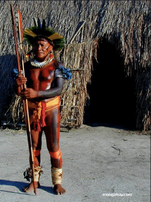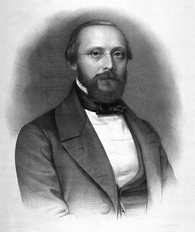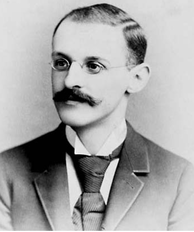Originally posted on the Mayo Clinic Center for Social Media, December 5, 2011
Medicine 2.0 may have a catchy jingle, it's simply wrong. Medicine has ancient roots. If we are going to really look at how to evolve healthcare, we should look beyond the last forty years. Let's go back thousands to get a more compete perspective.
1.0: Shaman
Medicine 2.0 may have a catchy jingle, it's simply wrong. Medicine has ancient roots. If we are going to really look at how to evolve healthcare, we should look beyond the last forty years. Let's go back thousands to get a more compete perspective.
1.0: Shaman
Source: Mongabay
Before Hippocrates, healers were direct intermediaries with the divine. The shaman served as a bridge between the spirit world and the wounded. Success was based not on knowledge but the ability to connect and function as a spiritual bridge to divine healing. The bond between the healer and wounded was an essential element to medicine.
2.0: Medieval (400 B.C. - 17th century AD)
Before Hippocrates, healers were direct intermediaries with the divine. The shaman served as a bridge between the spirit world and the wounded. Success was based not on knowledge but the ability to connect and function as a spiritual bridge to divine healing. The bond between the healer and wounded was an essential element to medicine.
2.0: Medieval (400 B.C. - 17th century AD)
Source:
Hippocrates added an essential component, the search for knowledge. As with philosophy, Hippocratic medicine sought truth and had the beginnings of scientific sensibilities, suggesting illness came from nature not the gods. Galen and others developed it further, but it remained linked to the divine as medieval medicine sometimes linked sin to illness and God to cure. Religious objections against human vivisection meant much medical knowledge was based upon other animals. These restrictions were challenged by Vesalius and others. While the scientific method matured in the Enlightenment, this period maintained links to the divine and a strong connection between doctors and patients.
3.0: Pre-Modern (18th - 19th century AD)
Hippocrates added an essential component, the search for knowledge. As with philosophy, Hippocratic medicine sought truth and had the beginnings of scientific sensibilities, suggesting illness came from nature not the gods. Galen and others developed it further, but it remained linked to the divine as medieval medicine sometimes linked sin to illness and God to cure. Religious objections against human vivisection meant much medical knowledge was based upon other animals. These restrictions were challenged by Vesalius and others. While the scientific method matured in the Enlightenment, this period maintained links to the divine and a strong connection between doctors and patients.
3.0: Pre-Modern (18th - 19th century AD)
Source: Wikipedia
As the Enlightenment began to take hold in Europe, the scientific method was increasingly accepted and used to better understand natural law . But during the latter part of the 19th century, many discoveries began to openly challenge long-held beliefs about human nature, as well as the nature of disease. The ability to perform surgery with anesthesia and to analyze disease at a cellular level are examples of how scientific knowledge tilted the focus away from the divine and humoral theory of medicine dating back to Galen. These advances drove medicine toward science and knowledge, setting the stage for weakening the doctor-patient dyad's bond.
4.0: Modern (1910 -)
As the Enlightenment began to take hold in Europe, the scientific method was increasingly accepted and used to better understand natural law . But during the latter part of the 19th century, many discoveries began to openly challenge long-held beliefs about human nature, as well as the nature of disease. The ability to perform surgery with anesthesia and to analyze disease at a cellular level are examples of how scientific knowledge tilted the focus away from the divine and humoral theory of medicine dating back to Galen. These advances drove medicine toward science and knowledge, setting the stage for weakening the doctor-patient dyad's bond.
4.0: Modern (1910 -)
Source: Wikipedia
The scientific breakthroughs of the 19th century and desire to improve quality in medical training led to the Flexner Report's guidance on a more scientifically rigorous, university-affiliated training program. But the emphasis on a more scientific approach has contributed to a more disinterested, less empathic professional approach. The modern professional has delivered with many technical improvements in the qualty of care, but at the price of increasing distance between the healer and wounded. About 40% of people in the U.S. may use alternative medicines, indicating that there are unmet needs within modern allopathic medicine for many.
Technology has allow us all to bypass medical professionals and find other health information online. Now, about 59% of adults look for health information online. Where do we go from here?
In my next post, I will imagine where we may be going in Medicine 5.0.
The scientific breakthroughs of the 19th century and desire to improve quality in medical training led to the Flexner Report's guidance on a more scientifically rigorous, university-affiliated training program. But the emphasis on a more scientific approach has contributed to a more disinterested, less empathic professional approach. The modern professional has delivered with many technical improvements in the qualty of care, but at the price of increasing distance between the healer and wounded. About 40% of people in the U.S. may use alternative medicines, indicating that there are unmet needs within modern allopathic medicine for many.
Technology has allow us all to bypass medical professionals and find other health information online. Now, about 59% of adults look for health information online. Where do we go from here?
In my next post, I will imagine where we may be going in Medicine 5.0.




 RSS Feed
RSS Feed